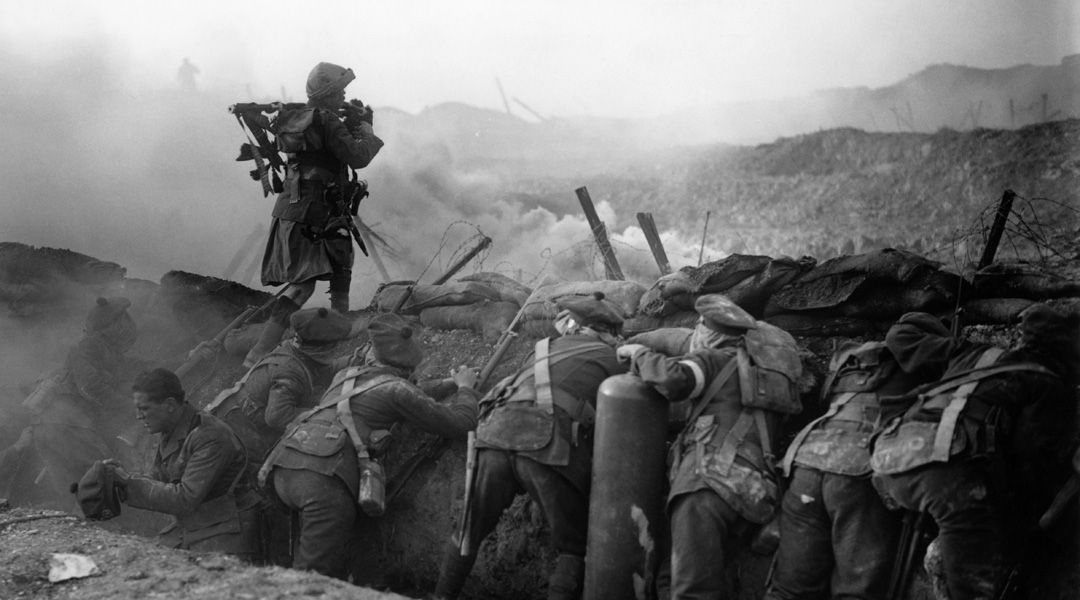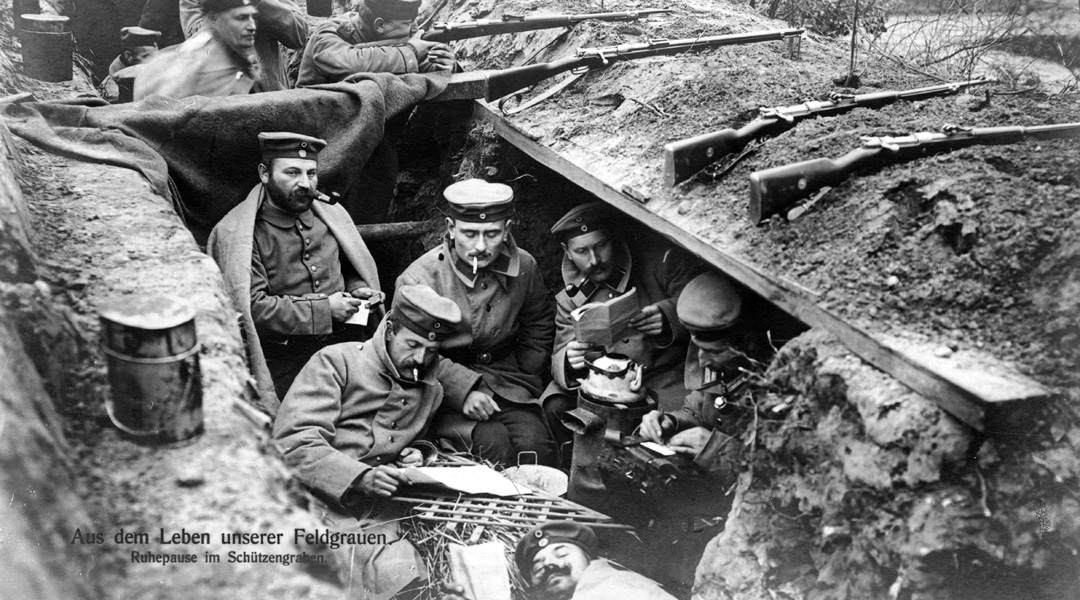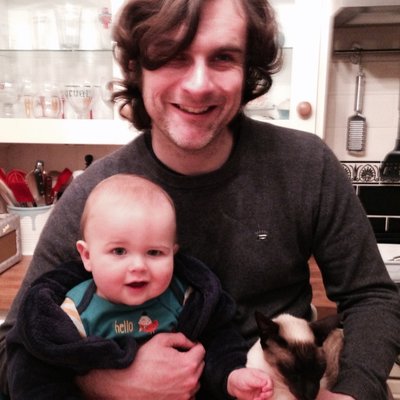The man who dribbled into battle: a previously untold story of football in WWI
FFT recalls the story of Frank Edwards, who faced down No Man’s Land’s bullets with a rifle… and a football...

A century on from the beginning of World War I, it’s now easy to get lost in the Boys’ Own myth of the plucky British Tommy. Arguably the primary feelgood story of the conflict involved football: the Christmas Day Truce of 1914.
“The English brought a soccer ball from the trenches, and a lively game ensued,” recalled Kurt Zehmisch, a soldier with the 134th Saxons. “How wonderful it was, yet how strange.” A spontaneous shouted exchange resulted in the ultimate pick-up match, a fixture that Germany inevitably won 3-2, and captured the public imagination. It was miraculous, heart-warming, a victory for humanity.
But this yarn was a world away from the conflict’s realities. Frank Edwards’ story was not. Edwards was a Cockney Rifleman who also played football in No Man’s Land. But Frank’s narrative contained little glory. Instead it’s a tale of discomfort, deprivation, maiming, poisoning, death and carnage. This was not about sport overcoming the bitterest of divides. It was about how football could give hope to men pushed to the limits of sanity.
Edwards kept a deflated casey in his tunic at all times, ready for action"
Edwards knew suffering before his 21st birthday. As a young man from a working class enclave of Chelsea, he’d witnessed his young wife and child die in childbirth in 1913. A year later, it’s a small wonder that he took the King’s Shilling and joined the London Irish Rifles. Football was Frank’s pleasure: he skippered the regiment team, who won the Brigade final at a time when the military was extremely strong in the sport.
Balls were dispatched to keep the troops happy, and Edwards kept a deflated casey in his tunic at all times. “It was ready to be put into action at any given opportunity,” wrote Ed Harris – who married Frank’s granddaughter and resurrected his story through a superb book, The Footballer of Loos. Frank was also a maverick. He sought fun whenever possible as the khaki-clad Rifles wound through France towards the Western Front. In Maroc, he discovered a pile of women’s dresses and immediately donned one, leading a parade of soldiers in drag.
Into the killing fields
The laughs were soon to end. Five months after being deployed, they reached the killing fields. Armed with outmoded rifles, they stared out onto No Man’s Land daily. In the trenches, the key was to keep your head down. Nights were spent fully clothed, because they may face combat at any time. And all times times, they faced the hoorendous medical malady of trench foot – the swelling, blistering and necrosis of wet feet, threatening gangrene and amputation.
Get FourFourTwo Newsletter
The best features, fun and footballing quizzes, straight to your inbox every week.

The regiment had been chosen to help lead the first “Great Push” from their post close to the mining village of Loos. The men weren’t daft: they knew the likely outcome was death. The best hope was “a Blighty one” – an injury bad enough to be sent home honourably, without permanent damage.
Forty-eight hours before the push, bayonets were sharpened and ammo was handed out, as was a steak supper with rum. A staggering bombardment of shells ensued, and at 5.50am, a cloud of chlorine gas was released towards the enemy. The Battle of Loos was notable for the use of chemical warfare, sinisterly dubbed by Field Marshal Douglas Haig as “the accessory”. It’s now a shameful footnote in the Great War.
Ladders were fixed to the trenches. “At last the war for us had really began,” wrote a correspondent in Weekly Dispatch. “Some looked a trifle pale, others were extra jolly, but all had a look of determination.”
Edwards wanted to dribble into No Man's Land. Officers burst his ball, but he had a spare..."
Edwards had his mind on other matters. “He’d conceived the great idea of dribbling the ball into the enemy’s lines,” writes Harris. “He’d cherished the notion.” The idea was frowned on by the officers, who had deflated one sphere. But Edwards had a spare. “Whatever might happen, the sight of British soldiers coolly passing would give the enemy their biggest shock of the war,” he said.
“Edwards was spotted calmly using valuable breath to blow up a ball, as though the matter in hand was a cup tie,” noted the Weekly Dispatch. “These old members of London Irish FC were not to be done out of the greatest game of their lives.”
"London Irish, lead on!"
“Blimey – you’ve still got it,” muttered the man next to Edwards as he produced his football. The cry of “London Irish, lead on!” came. “I had the ball in one hand, my rifle in the other,” said Edwards. “It was like all hell let loose. We were out of that trench in a split second. I took one great kick. Just for the hell of it.”

It wasn’t a well-timed run. The chlorine cloud, aimed at polluting German lungs, had stalled. Some had even blown back into British trenches. Men spat blood, suffering a horrific, lingering death. Edwards and his team-mates Micky Mileham, Bill Taylor and Jimmy Dalby thundered towards the poison. Wearing gas masks and chanting “On the ball, London Irish,” they squared passes to each other. Men were torn down in droves by bullets and burned to death by petrol bombs. French troops witnessed Frank’s charge. One soldier declared: “The boy is a lunatic.” His officer disagreed. “He’s not mad,” came the reply. “He’s a sportsman, scornful of death. That’s British sport.”
He’s a sportsman, scornful of death. That’s British sport”
They also scored. “They kicked it right into the enemy trench with the cry: ‘goal!’” reported Weekly Dispatch. “They had held the ball for 1,400 yards. It was the best goal in history.”
It came at a price. “Imagine running down Oxford Street with people at every window raining down bricks,” said one survivor. Edwards too hit trouble. “We captured the first trench, but I went down with a bullet through the thigh and hand and took no further part. As for the ball, that went on with some of the footballers – to eternity.”
Edwards was saved by Micky Mileham, who helped him back to a dressing station. His skin had turned yellow, and he was coughing from inhaling chlorine. “With lives maimed and finished, all the romance and roving that makes up the life of a soldier was gone forever,” notes Harris. Frank had survived, and while on first look it seemed like he’d caught “a Blighty one”, serious damage had been done. For the rest of his life he’d feel the effects of that gas attack by his own superiors.
After a year’s convalescence, he returned to Chelsea. Frank had no choice but to crack on with real life. Despite his lung damage, he qualified as a gym instructor. He remarried and had children, taught swimming and fencing, and was in the Military Police among other jobs. He lived in Whitton, south west London, where The Rifleman pub still features his portrait on its beautifully painted sign. His dog, Tigg, would be sent to get him for tea.
Edwards’ adventures did bring some celebrity. A statue of “the footballer of Loos” was displayed in his regiment’s mess, and in the 1930s, BBC radio interviewed Edwards, and his old mate Micky Mileham was listening. The pair were reunited. Frank also re-enacted his charge as part of the London Irish Regiment’s Torchlight Tattoo.
But author Ed Harris believes that the story is ultimately tragic. “The sad thing was, Loos should have been a great victory, but they didn’t send back-up in time,” he tells us. “The war could have been made shorter, but they repeated the same mistakes at the Somme. The military command learned nothing.
“But for Frank, football was ultimately his salvation.”
The Footballer of Loos, by Ed Harris, is available from thehistorypress.co.uk
Nick Moore is a freelance journalist based on the Isle of Skye, Scotland. He wrote his first FourFourTwo feature in 2001 about Gerard Houllier's cup-treble-winning Liverpool side, and has continued to ink his witty words for the mag ever since. Nick has produced FFT's 'Ask A Silly Question' interview for 16 years, once getting Peter Crouch to confess that he dreams about being a dwarf.

